PCTA Communicator: Taking up space in the middle of nowhere
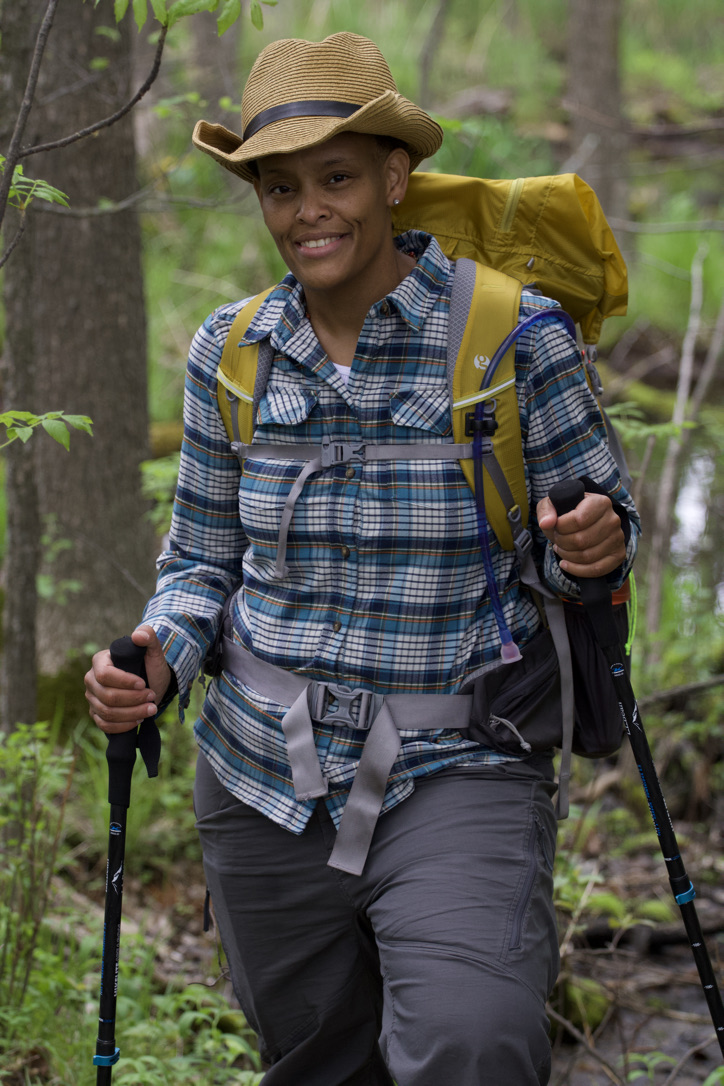
Taking up space means that you have the power of choice. You get to choose who to love, what to eat, what to buy, how you behave, how to spend your time, how to think and where to hike. On the surface, all these things are obvious. They are a given. However, as a Black woman, I was overburdened from birth with instructions about the appropriate way to exist.
I grew up in Florida, raised by a single father of four. I wasn’t introduced to the outdoors beyond the confines of our neighborhood playground—better described as a small graveyard devoid of playground equipment, let alone space for exploration. I had no nature-based experiences. My classmates shared stories of camping trips, visits to national parks and other journeys in the outdoors. Those classmates were white. I hadn’t heard stories of Black outdoorsmen and my family couldn’t afford those excursions. The underlying message was it wasn’t for Black people. It wasn’t for me.
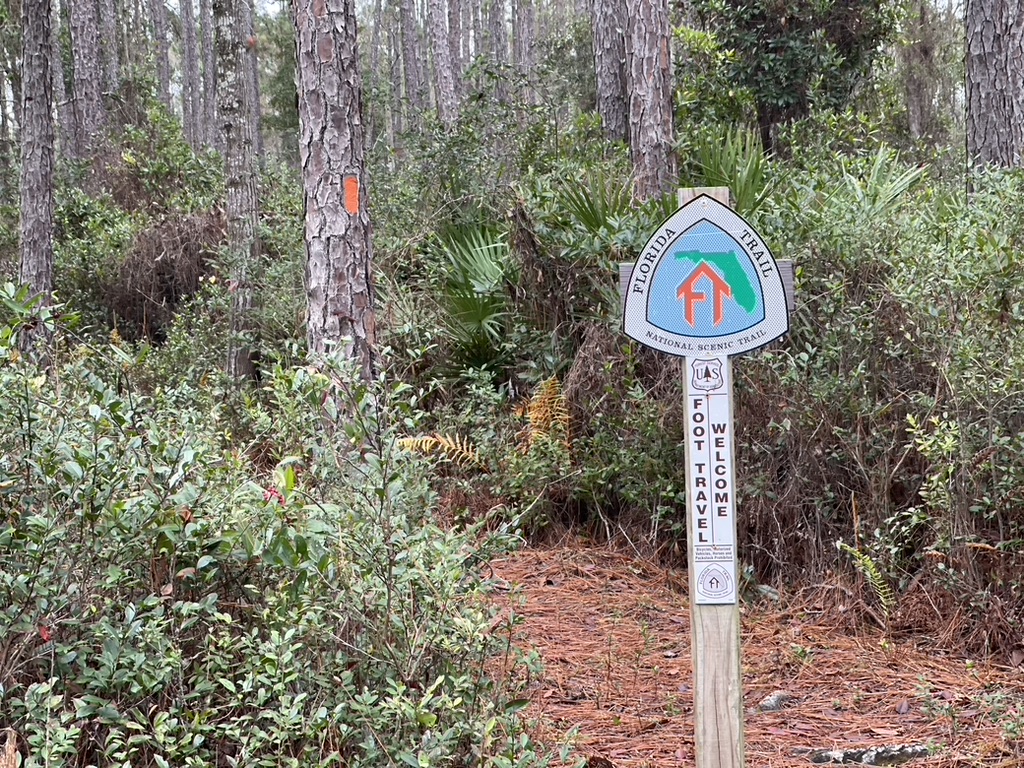
In the winter of 2008, I attended an outdoor retreat for women survivors of sexual assault—an expedition I shared with six others, plus two field guides. The retreat provided challenging, structured activities, one of which was rock climbing. We belayed one another as we took turns scaling the rocks. It was my first time camping, the first time I’d slept in the woods, and I didn’t know that people went rock climbing for fun. I personally prefer to stay on the ground.
At the time, I weighed 375 pounds. The traditional safety equipment did not fit me. The field guide assisted me in tying knots to make a safety net of sorts. Wearing a makeshift harness, I scaled the side of the mountain. It took a lot of courage to reach the top, but once there, I fell in love. I gazed out over the jagged peaks with a sense of awe. It was clear in the mountains; waves of snow whizzed down the sides, crumpling at the base. The peaks stood tall, kissing the sky. There, in and with Nature, I found my strength. I climbed a mountain and discovered fearlessness.
<script async src=”https://pagead2.googlesyndication.com/pagead/js/adsbygoogle.js?client=ca-pub-6139803315441080″
crossorigin=”anonymous”></script>
Shortly after that trip, without provocation, I started to experience visual disturbances accompanied by headaches and migraines that could not be treated with over-the-counter medication. I attributed the problems to needing a new pair of glasses. I scheduled an appointment with an optometrist who transferred me to the hospital. A neuro-ophthalmologist diagnosed the brain disease pseudotumor cerebri. There is no known cause or cure. With pseudotumor cerebri, my body thinks and acts like I have a brain tumor even though I don’t. However, there is an increase in intracranial pressure, which causes swelling of the optic nerve.
In my case, a shunt was installed in an effort to improve my eyesight and reduce headaches. Months later, I learned that the shunt had malfunctioned, and I needed another surgery. I would have several more shunt surgeries over the span of a decade. Having this disease was a traumatic experience; the repercussions will likely last my lifetime. I spent a lot of years sedentary as my attempts to be physically active caused excruciating pain. Doctors told me that I was going to have to live with severe pain and be on medication for the rest of my life. More people telling me how I should exist.
<script async src=”https://pagead2.googlesyndication.com/pagead/js/adsbygoogle.js?client=ca-pub-6139803315441080″
crossorigin=”anonymous”></script>
Over time, realizing that I would be in pain regardless of what I did, I chose to be active. I spent time outdoors, participating in activities that involved exploration and inner strength, which, it turns out, I yearned for. One afternoon while walking with a friend in a nature preserve tucked away in a hidden crevice of Atlanta, we followed the trail down to a quiet stream. As I looked downstream, I noticed plants growing at the base of a large oak. Moving closer, I could see that the tree roots were working hard to hold the rocks and dirt in place. I knelt and hugged the tree. Intuitively I understood that in many ways, I was like a tree. My feet, like roots, firmly planted on the ground. My arms like branches and my fingers, leaves. Embracing that oak, I knew that Nature made up all of me.
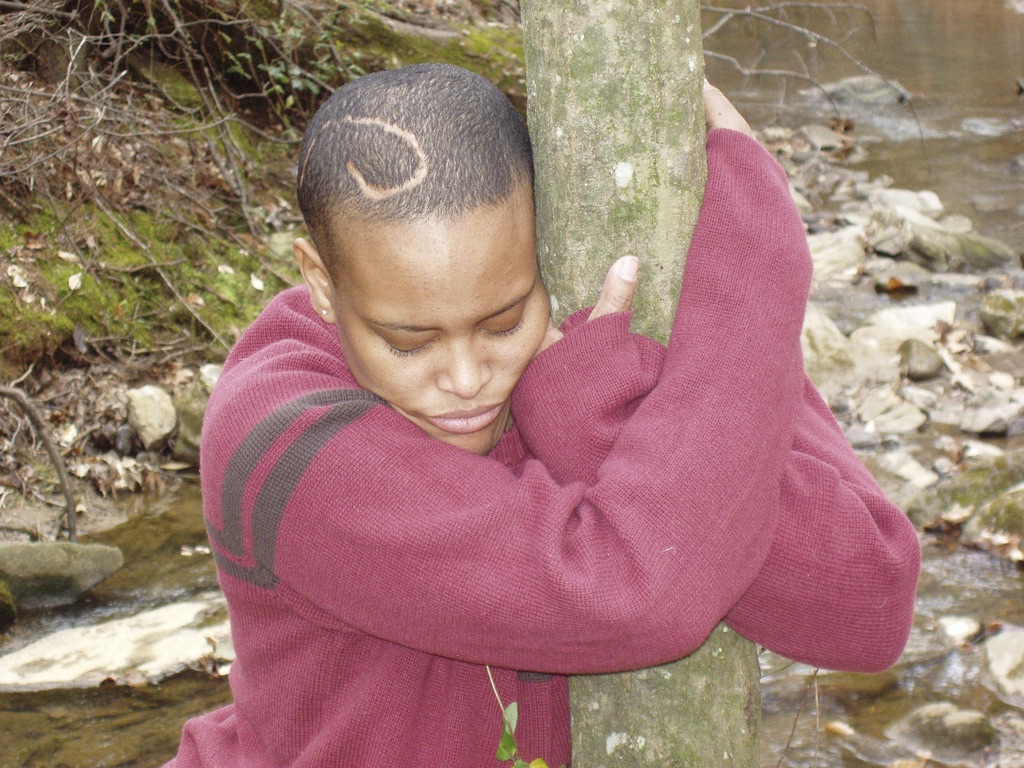
That was the day I decided I belonged in the outdoors. At that moment, I was sure of two things: from a geological perspective, the bulk of trees and mountains in the U.S. are in the West; and in pioneer days, people migrated to the West for opportunities. Eventually, I would head there as well to hike the 2,650-mile Pacific Crest Trail. I did this in order to challenge myself, reclaim the body that had betrayed me, and reconnect with the universe.
<script async src=”https://pagead2.googlesyndication.com/pagead/js/adsbygoogle.js?client=ca-pub-6139803315441080″
crossorigin=”anonymous”></script>
In silence and security, I have grown to love the way trees celebrate changing seasons. Standing as symbols of life’s evolving Nature, they bend and change shape and color as the seasons progress, yet they stand steadfastly safe and secure. They express Nature’s eternal life. Flora and fauna were plentiful along the PCT. The characteristics of each are as unique and pristinely bound to the geology as the mountains themselves. On the 7,124-foot summit of Pacifico Mountain, I stood in awe, peering out over the Mojave Desert on the north-facing slope of the San Gabriel range. Reflecting on my reasoning for my PCT trek, I thought of how I could gain a deeper, fuller understanding of who I was by reconnecting to Nature.
The desert’s various hues were a reflection of my shades, replicas of my skin. In Nature, I am a much healthier and more creative person. I believe that when we are out in Nature, our perspectives shift. We see shades and hues and rainbows and realize that the parts of ourselves that we judge—ever so harshly—may be understandable, even acceptable. Yes, the concept of Nature should be accessible for all, and while the notion that everyone can go to a trail is admirable, it’s far from reality for a lot of people. More precisely, the various intersections of my identity–Black, female, lesbian and a person with a disability, were barriers to the outdoors, or so I was told.
As a Black person who grew up in predominantly white classrooms, I was taught a version of history that negated my ancestors’ existence before slavery. I learned about the splintered achievements of the environmentalist John Muir, who held deeply racist beliefs—the ideologies that formed the basis of the exclusionary outdoors, Nature.
One uncontested theme of 2020 is “I Can’t Breathe,” whose intro, verse, chorus and bridge quickly became the lyrical mantra chanted not only in the U.S. but all over the world. After the death of George Floyd, a Black man slain by Minneapolis police officers, unrest convulsively fanned the U.S. This killing reflected long-standing disparities and inequalities faced by Blacks. Sadly, these deaths continue to send a message that Black Lives don’t matter.
So many Blacks have come to believe that we are the problem and that there is something wrong with us. The indisposition of Blackness can be stifling. To find wellness and restoration, we need to be soothed and nurtured. We can find that solace in Nature. I’m a firm believer that Nature doesn’t discriminate. In fact, I believe she is the ultimate healer. As a lover of Nature and an advocate for both environmental and social justice, on July 4, 2020, I began a 310-mile thru-hike along the Superior Hiking Trail in Minnesota. My goal was to take up space—to assert my right to be in that space.
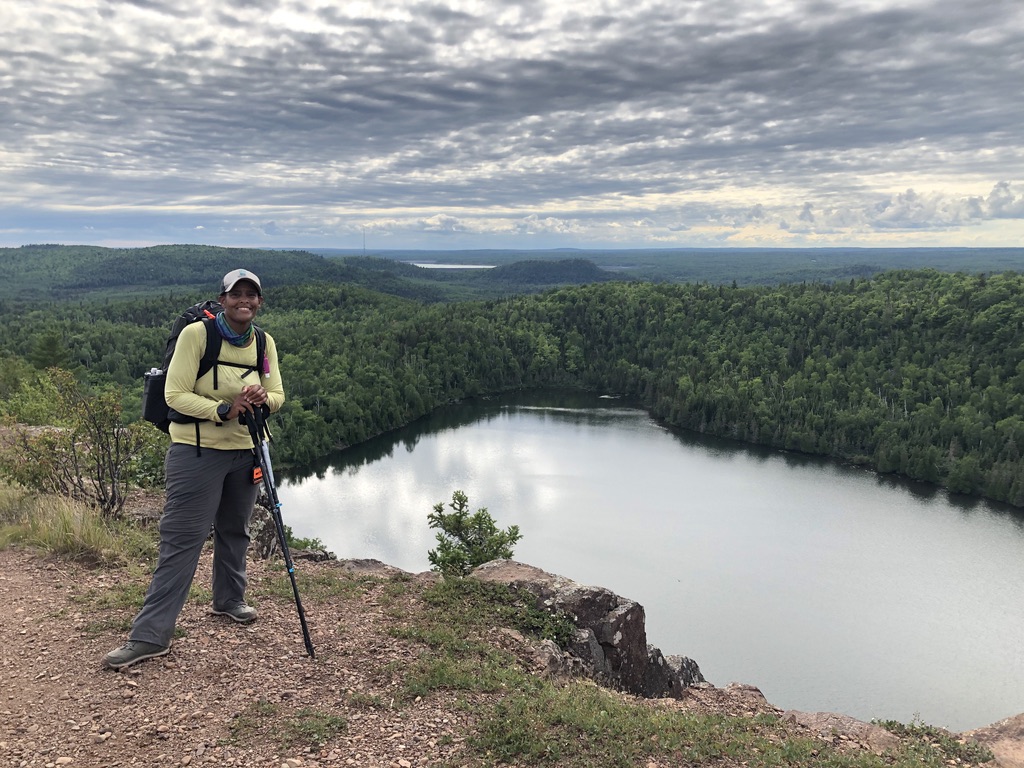
The moment I stepped foot on the blue blaze that marks the trail, my mind began to explore the depths of the various hues of blues that I’ve encountered throughout my travels in Nature—peacocks, hydrangeas, moor frogs, sometimes the sky and sometimes the ocean. As quickly as I ruminated on the beauty of the color blue, my thoughts were disrupted by the images of the “boys in blue.” Police officers are sworn to protect and serve. Just as the thought entered, I tripped over my feet. Quickly catching my balance, a blue jay flew overhead. Each time my mind wandered off to the negativity surrounding the killing of George Floyd or the countless incidents of violence inflicted upon Black bodies, a blue jay or its feather would find me.
Blue jays were very abundant and there were many connections between the bird that would become my guardian, my situation and the events that lead to my hike. The bird, a symbol of protection and fearlessness, became an iconic reminder that I was safe.
Near daily, I woke to a tent soaked with condensation. The inability to keep my socks dry made for lyrical rants using words I won’t go on record saying here. After a few nights on the trail, I awakened to the sound of my tent flapping in the wind. I listened as rain rhythmically drummed on my tent. From the comforting warmth of my sleeping bag, I came to realize that I had to accept what I was going through. Not just the wetness of the trail, but all things, and trust that Nature would only give me what I needed when I needed it and what I could handle.
<script async src=”https://pagead2.googlesyndication.com/pagead/js/adsbygoogle.js?client=ca-pub-6139803315441080″
crossorigin=”anonymous”></script>
In the morning, I ate breakfast, seated next to my saturated tent. Overhead a blue jay circled and sang. The sun came out and stayed for a while. I completed the 310-mile hike in 24 days. It rained at some point on 21 of those days. Each day I discovered something new, both on trail and about myself. I witnessed the transformation of trees and colors as I traveled northward over the month.
Despite the grief and trauma—all the negative that has taken place and continues to take place—I’ve come to understand that what we need is peace. Nature continuously nurtures the spirit. She inspires and is a constant reminder that good things come when they come from a place of peace. But no matter how healing a brook, mountain ridge, or estuary may be, those spaces are for the privileged. As I’ve stated, they are not accessible to everyone.
Historically, Nature hasn’t been a safe place for BIPOC (Black indigenous people of color). BIPOC need to see themselves represented in Nature and understand that they have an inherent right to that connection. When we recognize ourselves as allies and co-creators with the earth and the natural world, our relationship to the environment can change, and healing can begin. We can take up space.
This will require a complete paradigm shift for backpackers and nature conservationists, as well as anyone who works with the general public in relation to the outdoors. Everyone deserves to have their own outdoor experiences. I ask you to consider how we, as a community of people passionate about the outdoors, can make this happen.
Reflecting on the ways Nature has allowed me to reconnect, create and grow, I have come to understand that to fully thrive, we need to take care of our roots and our ties to one another.
This summer, I plan to hike the John Muir Trail section of the PCT—the name, views, and beliefs synonymous with a racist. But despite his namesake amongst the various flora and fauna and High Sierra peaks, I will find the love that connects and accepts and will allow humanity to live and thrive. I hope that in hiking the JMT, I will encourage other BIPOC, young and old, and people like myself with intersecting identities to explore, reclaim, reconnect, restore and take up space in the vastness of Nature, in the middle of nowhere.
The place where we all truly belong.
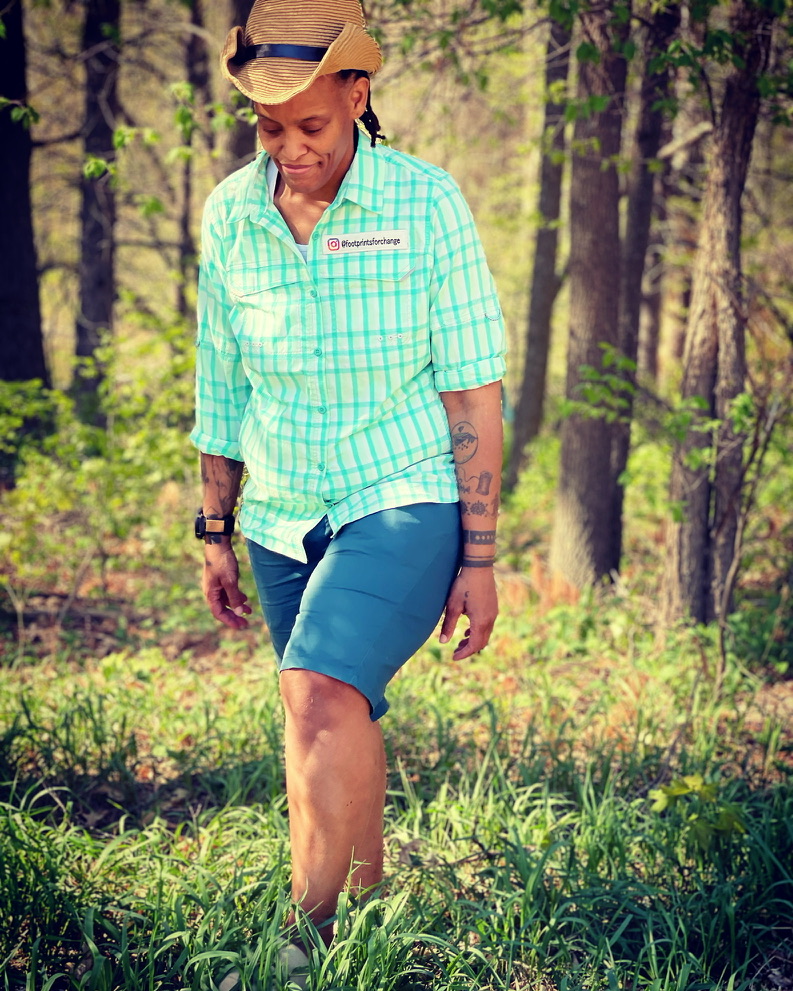
Feature Image Photo Credit: Mizhakwad Anderson
Original Article: ©PCT Communicator Magazine Summer 2021